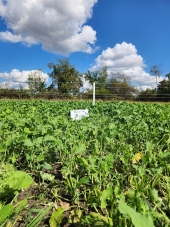
 8
8




 14
14




John Daley Bendigo, Australia The Enemy of progress is the hope of a perfect plan
Benefits of rainfall collection https://permies.com/t/88043/benefits-rainfall-collection
GOOD DEBT/ BAD DEBT https://permies.com/t/179218/mortgages-good-debt-bad-debt
 9
9




With appropriate microbes, minerals and organic matter, there is no need for pesticides or herbicides.
 6
6




 7
7




 7
7




John Daley Bendigo, Australia The Enemy of progress is the hope of a perfect plan
Benefits of rainfall collection https://permies.com/t/88043/benefits-rainfall-collection
GOOD DEBT/ BAD DEBT https://permies.com/t/179218/mortgages-good-debt-bad-debt
 9
9




John C Daley wrote:
From both the producer and consumer standpoint, chicken fat is no good.
"From the farmers' standpoint, fat is a waste," Davis said. "Nobody wants to eat it, so you sure can't sell it."
Education: "the ardent search for truth and its unselfish transmission to youth and to all those learning to think rigorously, so as to act rightly and to serve humanity better." - John Paul II
 9
9




Invasive plants are Earth's way of insisting we notice her medicines. Stephen Herrod Buhner
Everyone learns what works by learning what doesn't work. Stephen Herrod Buhner
 10
10




A build too cool to miss:Mike's GreenhouseA great example:Joseph's Garden
All the soil info you'll ever need:
Redhawk's excellent soil-building series





 7
7




 7
7




Zone 6, 45 inches precipitation, hard clay soil




 3
3




 3
3




 4
4




 4
4




Lexie Smith wrote:Ragweed and goldenrod bloom seasons overlap here in the southeastern United States and ragweed causes fairly severe allergy problems and goldenrod gets blamed. I’m not familiar with a use for ragweed but goldenrod tincture is an excellent treatment for for the seasonal allergies ragweed causes.
 4
4




Together is our favorite place to be







 3
3




There is nothing so bad that politics cannot make it worse. - Thomas Sowell
Everything that is really great and inspiring is created by the individual who can labor in freedom. - Albert Einstein
 3
3




Tina Wolf wrote:I eat the new ragweed leaves...put them in smoothies, grind up and put over food. Also, the roots for tea and grind up seeds and sprinkle over food. All for allergies. Our allergies are non-existent since we started eating ragweed
That sounds wonderful! My whole family suffers from extremely intrusive allergies almost year round. Some of us take oregano oil and some a mixture of goldenrod and mimosa but I love the idea of the symptoms being nonexistent! Please, give me a little more information about timing. Do you wait to harvest until the seeds are present and then harvest the different parts of the plant? I’m playing with a new freeze dryer and I really love the way it preserves herbs, do you dry the seeds and leaves for year round use?
 2
2




 2
2




Lexie Smith wrote:
That sounds wonderful! My whole family suffers from extremely intrusive allergies almost year round. Some of us take oregano oil and some a mixture of goldenrod and mimosa but I love the idea of the symptoms being nonexistent! Please, give me a little more information about timing. Do you wait to harvest until the seeds are present and then harvest the different parts of the plant? I’m playing with a new freeze dryer and I really love the way it preserves herbs, do you dry the seeds and leaves for year round use?
 2
2




 2
2




 1
1




 1
1




Blake Lenoir wrote:What's happening folks! I wanna find out if the leaves and seeds could eaten raw especially in survival situations. When do we harvest the stuff if they become ripe?
 2
2




With appropriate microbes, minerals and organic matter, there is no need for pesticides or herbicides.







 3
3




Ellen Lewis wrote:The ragweed I have here is Ambrosia psylostachia. Medicinally equivalent, to my knowlege.
I planted it in my parking strip to crowd out foxtail and burr clover and dallis grass. Spread quickly, grew thickly, worked great. Now that the ground is not stickery it's time to plant something else that's tall enough to compete and will crowd out the ragweed.
My understanding is that traditionally the seeds were eaten, which sounds time-consuming & fiddly, but so are many seeds that can diversify a diet such as those used in pinole.
 4
4




My giant ragweed grows to be about 8 feet tall, so the idea of planting something that might get tall enough, and be stubborn enough, to crowd it out is terrifying.

|
girl power ... turns out to be about a hundred watts. But they seriously don't like being connected to the grid. Tiny ad:
The new kickstarter is now live!
https://www.kickstarter.com/projects/paulwheaton/garden-cards
|





